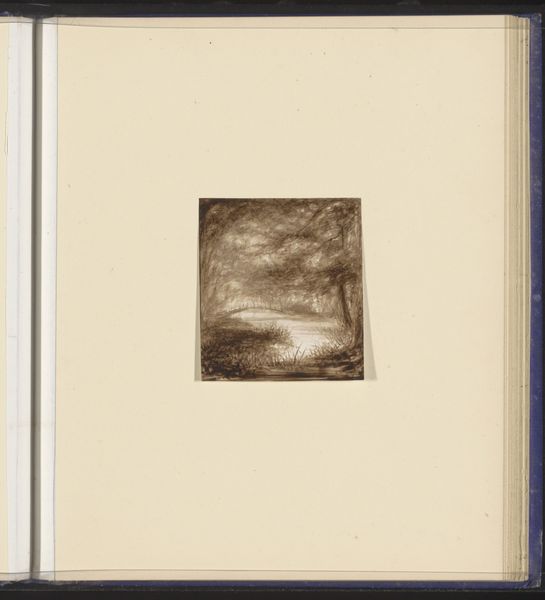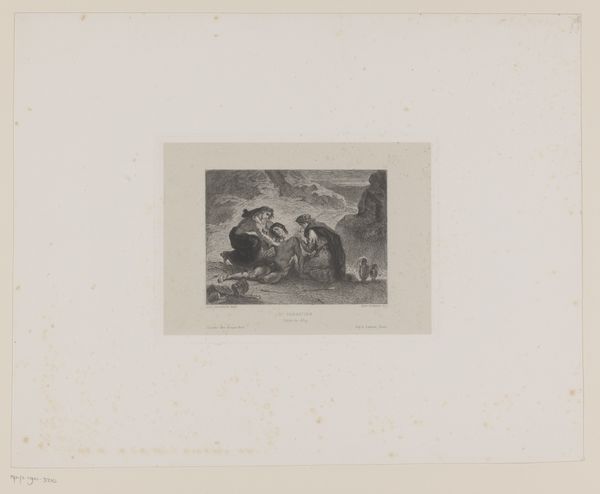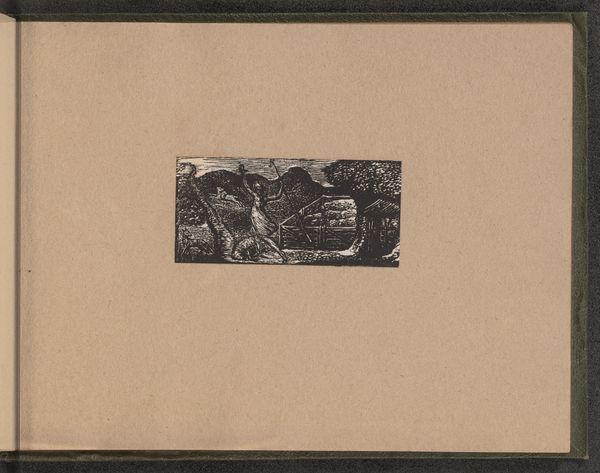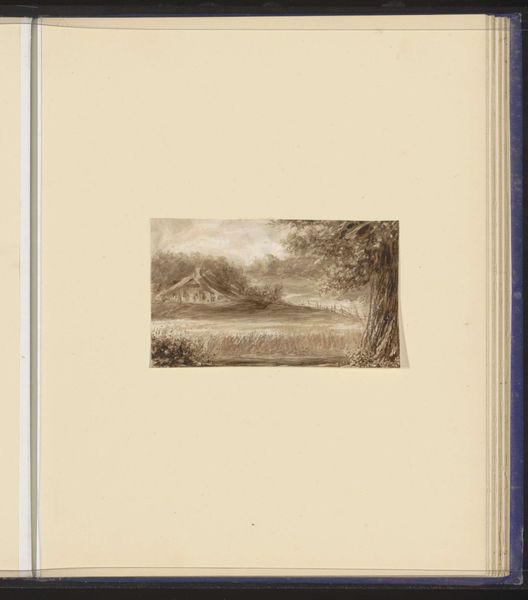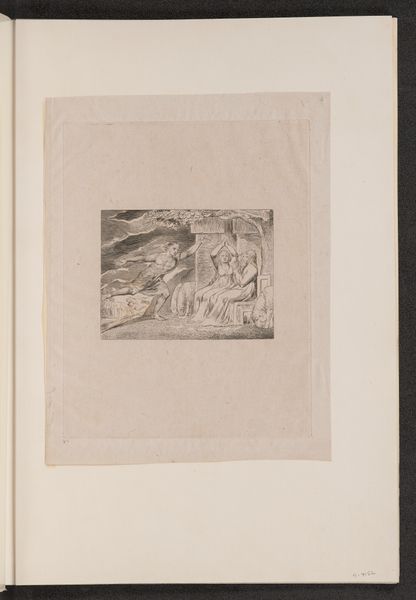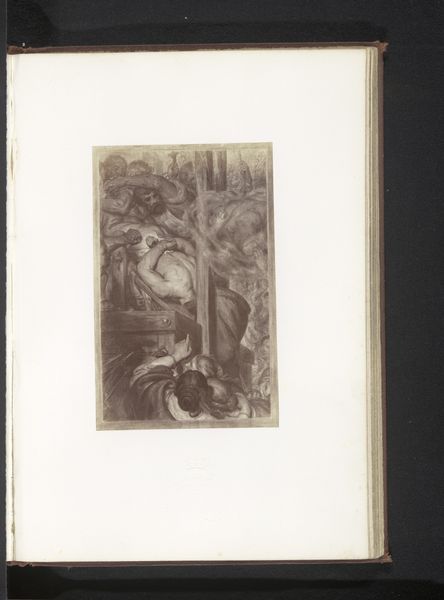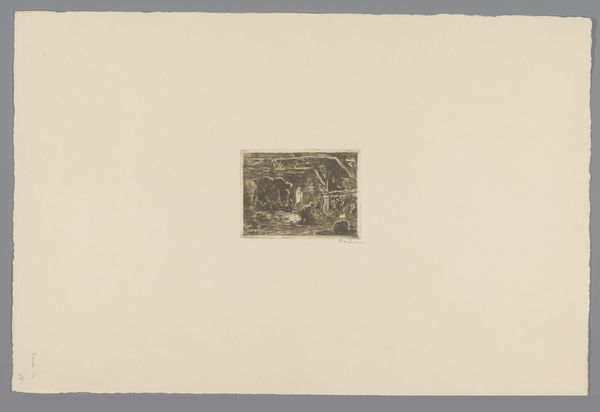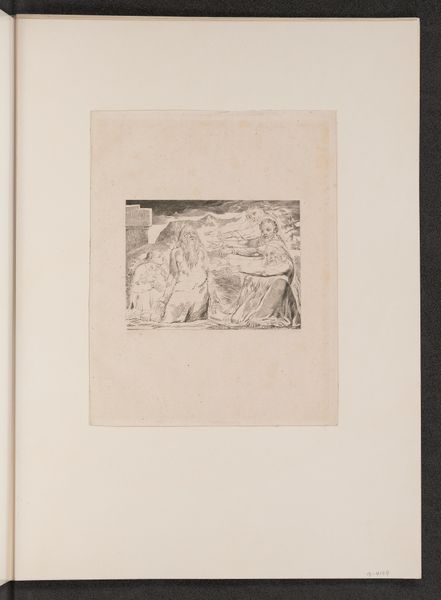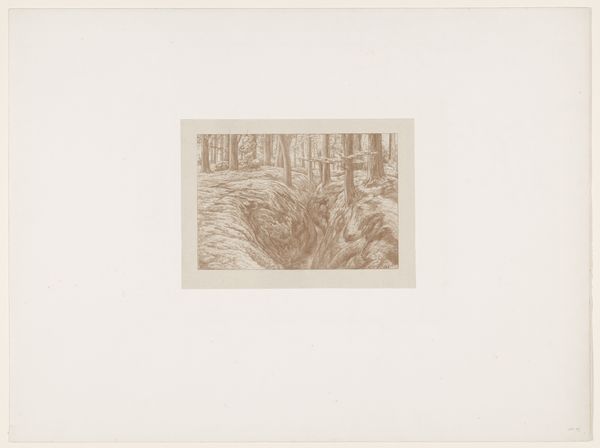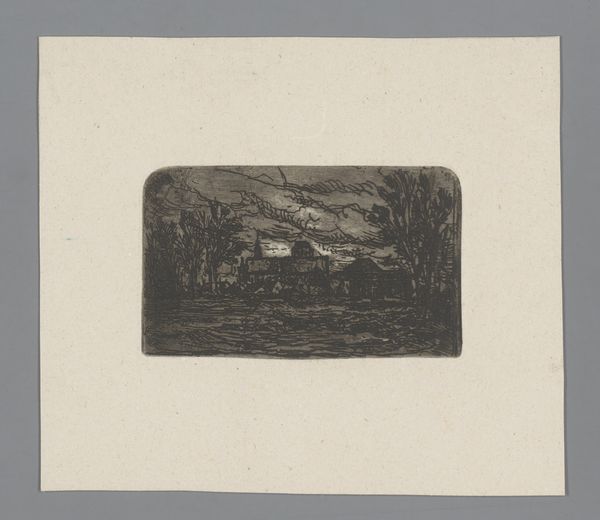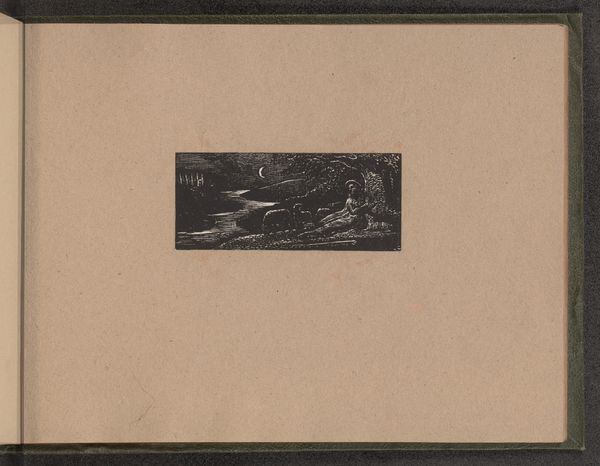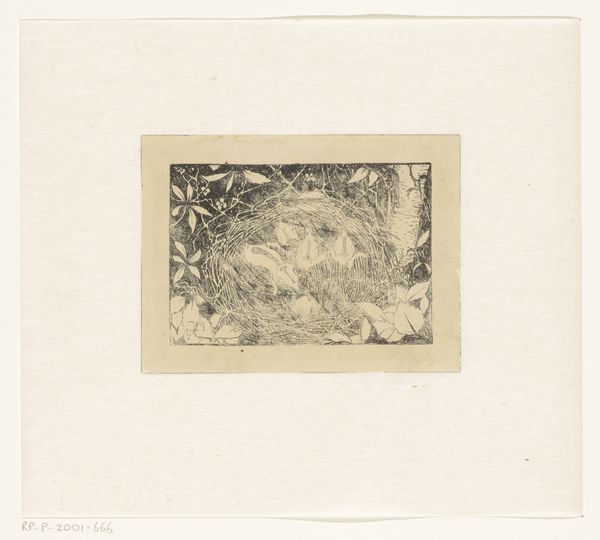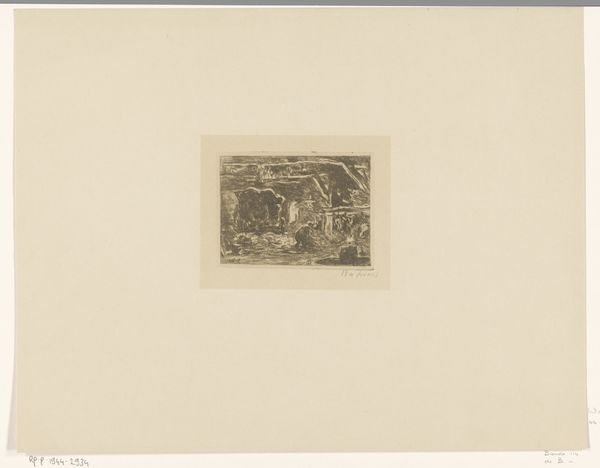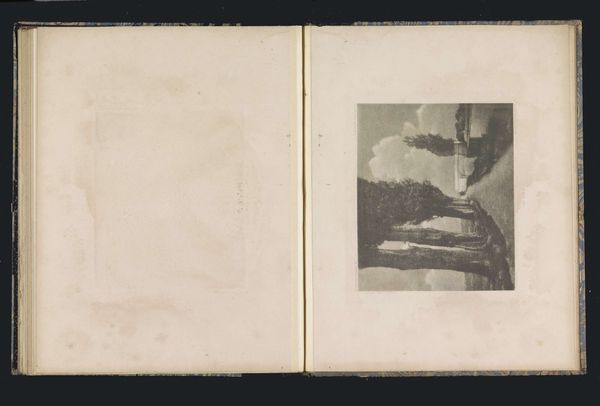
Dimensions: height 96 mm, width 113 mm
Copyright: Rijks Museum: Open Domain
This landscape with a wanderer, made by Alexander Ver Huell, is a sepia drawing. Sepia, derived from the ink sac of cuttlefish, was a popular choice for its warm, monochrome tones. The application of sepia here, with its thin, diluted washes, gives a soft, atmospheric quality to the scene, a quality quite unlike the sharp detail you might get from a graphite pencil. The use of sepia in the 19th century can be seen as more than just an artistic choice. It was linked to historical processes, referencing classical drawings while being relatively inexpensive. The social context of this artwork is interesting too. The ability to create picturesque landscapes like this was very much tied to the rise of leisure and the appreciation of nature by the middle classes. It wasn't just about what was depicted, but about who had the time and resources to appreciate and create such a work. So, when we look at art, let's remember that the materials and techniques used are deeply interwoven with social and economic factors, influencing not just what we see, but how we see it.
Comments
No comments
Be the first to comment and join the conversation on the ultimate creative platform.
